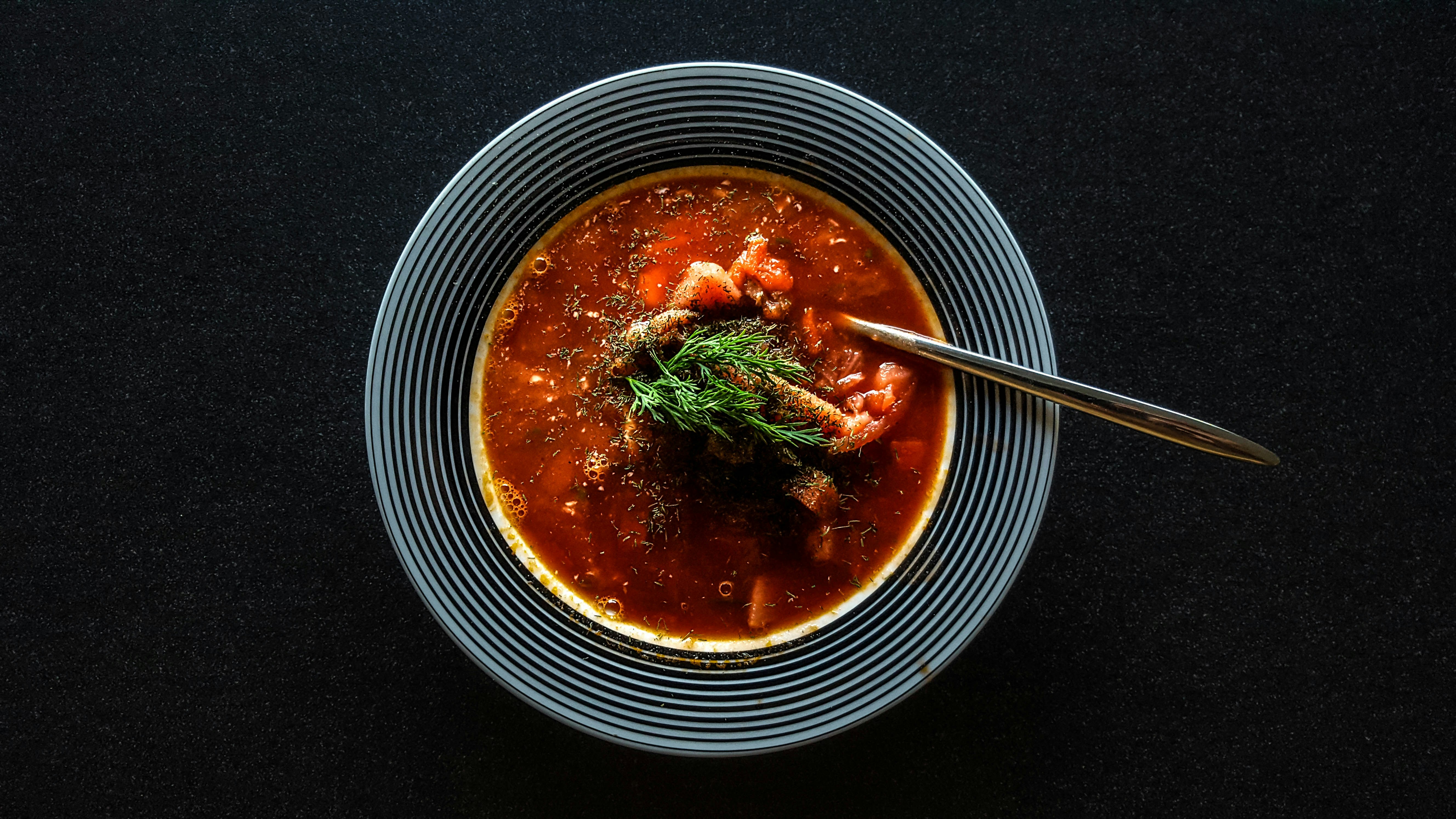Russian Fish Borscht
A unique Russian variation of borscht made with fish instead of meat, popular in coastal regions and during fasting periods. This version uses sturgeon or salmon and includes fish roe for garnish.
Ingredients
- 1 kg sturgeon or salmon fillets
- 1 kg beets, peeled and grated
- 2 large onions, diced
- 3 carrots, grated
- 1 small cabbage, shredded
- 4 potatoes, cubed
- 2 tbsp tomato paste
- 1 tbsp white vinegar
- 3 cloves garlic, minced
- 2 bay leaves
- Fresh dill and parsley
- Fish roe for garnish
- Smetana (sour cream) for serving
- Salt and white pepper to taste
Ingredient Substitutions & Tips
- Beets: Can substitute with golden beets for a milder flavor
- Cabbage: Red cabbage can be used instead of green for extra color
- Sour cream: Greek yogurt or crème fraîche work as alternatives
- Fresh herbs: Dried herbs can be used (use 1/3 the amount)
Step-by-Step Instructions
Prepare fish stock from fish bones and heads
All Steps
Prepare fish stock from fish bones and heads
Poach fish fillets in stock
Sauté onions and carrots
Add beets and cook until tender
Add cabbage and potatoes
Return fish to pot
Season with vinegar and herbs
Serve with fish roe and smetana
Pro Tips
- Let the borscht rest for at least 30 minutes after cooking for the best flavor
- Serve with a dollop of sour cream and fresh dill for authentic taste
- Borscht tastes even better the next day - perfect for meal prep!
- Freeze leftovers in individual portions for quick weeknight meals
You Might Also Like

Classic Ukrainian Borscht
The quintessential Ukrainian borscht, a hearty beet soup that's both nutritious and delicious. This traditional recipe has been passed down through generations and is considered a national treasure of Ukraine.

Polish White Borscht (Barszcz Biały)
A traditional Polish white borscht made with fermented rye flour and served with boiled eggs and sausage. This hearty soup is a staple during Easter celebrations.

Lithuanian Cold Borscht (Šaltibarščiai)
A refreshing cold beet soup perfect for hot summer days. This Lithuanian version is served with hard-boiled eggs and fresh dill.